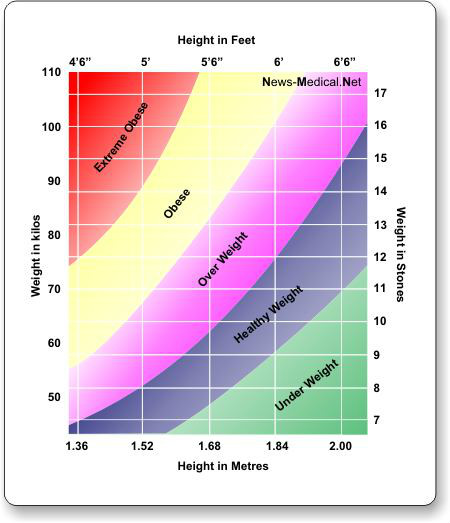定義
Overweight and obesity are defined by the WHO as abnormal or excessive fat accumulation that presents a risk to an individuals health.
Overweight and obesity are major risk factors for a number of chronic diseases, including diabetes, cardiovascular diseases and cancer and while it was once an issue only in high income countries, overweight and obesity has now dramatically risen in low- and middle-income countries.Such countries are now facing a "double burden" of disease, for while they continue to deal with the problems of infectious disease and under-nutrition, they are also experiencing a rapid upsurge in chronic disease risk factors such as obesity and overweight, particularly in urban settings.
Under-nutrition and obesity often exist side-by-side within the same country, the same community and even within the same household and this double burden is caused by inadequate pre-natal, infant and young child nutrition followed by exposure to high-fat, energy-dense, micronutrient-poor foods and lack of physical activity.
超重和肥胖由世界衛生組織定義為異常或過量脂肪積累以至於對一個人的健康產生危險。
超重和肥胖是許多慢性疾病的主要危險因素,包括糖尿病,心血管疾病和癌症,而這曾經是僅在高收入國家的一個問題,超重和肥胖在低收入和中等收入的國家現在急劇上升。這些國家現在面臨的是一個“雙重負擔”的疾病,雖然他們繼續應對傳染病的問題和營養條件下,他們也正在經歷一個慢性病的風險因素如肥胖和超重的快速興起,尤其是在城市環境。
營養與肥胖往往同時存在在同一個國家,同一個社區,甚至在同一個家庭,這是不足的雙重負擔產前引起,嬰幼兒營養隨後暴露於高脂肪,高能量的食物,營養不良和缺乏體力活動。
結果與健康風險
Consequences and Health Risks
Obesity is a concern because of its implications for the health of an individual as it increases the risk of many diseases and health conditions including: -
Coronary heart disease
Type 2 diabetes
Cancers (endometrial, breast, and colon)
Dyslipidemia (for example, high total cholesterol or high levels of triglycerides)
Stroke
Liver and Gallbladder disease
Sleep apnoea and respiratory problems
Osteoarthritis (a degeneration of cartilage and its underlying bone within a joint)
and Gynaecological problems (abnormal menses, infertility).
These conditions can cause or contribute to premature death and substantial disability.
Cardiovascular disease - mainly heart disease and stroke - is already the world's number one cause of death, killing 17 million people each year and diabetes has rapidly become a global epidemic - according to WHO projections diabetes deaths will increase by more than 50% worldwide in the next 10 years.
Less common health conditions associated with increased weight include asthma, hepatic steatosis and sleep apnoea.
結果與健康風險
肥胖是一個問題因為它對一個人的健康的影響,為它增加了許多疾病和健康狀況的風險包括:—
冠狀動脈粥樣硬化性心臟病
2型糖尿病
(子宮內膜癌,乳腺癌,結腸癌)
高血壓(高血壓)
血脂異常(例如,高總膽固醇或高甘油三酯)
腦卒中
肝臟和膽囊疾病
睡眠窒息呼吸問題
骨關節炎(一種退化的軟骨和骨的關節內的)
婦科問題(月經異常,不孕)。
這些條件可以引起或導致過早死亡和嚴重殘疾。
心血管疾病是心臟病和中風-已經是世界頭號死亡原因之一,每年造成17000000人,糖尿病已迅速成為一個全球性的流行病-據WHO預測糖尿病死亡將增加超過在未來10年全球50%。
不常見的健康狀況與體重增加有關,包括哮喘,肝脂肪變性和睡眠呼吸暫停。
經濟後果
Overweight and obesity and their associated health problems have a significant economic impact on health systems and the medical costs associated with overweight and obesity have both direct and indirect costs - direct medical costs may include preventive, diagnostic, and treatment services related to obesity, while indirect costs relate to loss of income from decreased productivity, restricted activity, absenteeism, and bed days and the income lost by premature death.
超重和肥胖及其相關健康問題有一個顯著的經濟影響的衛生系統和醫療成本的超重和肥胖有相關聯的直接和間接成本。直接成本可能包括醫療診斷,預防,和治療服務相關的肥胖,而間接成本與損失的收入來自生產力,限制活動收入,過早死亡。
測量肥胖
A crude population measure of obesity is the body mass index (BMI) which is a simple index of weight-for-height that is commonly used in classifying overweight and obesity in adult populations and individuals - a person's weight in kilograms is divided by the square of the height in meters (kg/m2). BMI provides the most useful population-level measure of overweight and obesity as it is the same for both sexes and for all ages of adults but it is merely a rough guide because it may not correspond to the same degree of fatness in different individuals.The WHO defines an adult who has a BMI between 25 and 29.9 as overweight - an adult who has a BMI of 30 or higher is considered obese - a BMI below 18.5 is considered underweight, and between 18.5 to 24.9 a healthy weight .
BMI provides a benchmark for individual assessment, but experts suspect that the risk of chronic disease in populations increases progressively from a BMI of 21 upwards.
Measuring overweight and obesity in children aged 5 to 14 years is challenging - the WHO Child Growth Standards includes BMI charts for infants and young children up to age 5 - childhood obesity is associated with a higher chance of premature death and disability in adulthood.
BMI ranges for children and teens are defined so that they take into account normal differences in body fat between boys and girls and differences in body fat at various ages. However although BMI correlates with the amount of body fat, BMI does not directly measure body fat and some people, such as athletes, may have a BMI that identifies them as overweight even though they do not have excess body fat.
Other methods of estimating body fat and body fat distribution include measurements of skinfold thickness and waist circumference, calculation of waist-to-hip circumference ratios, and techniques such as ultrasound, computed tomography, and magnetic resonance imaging (MRI).


